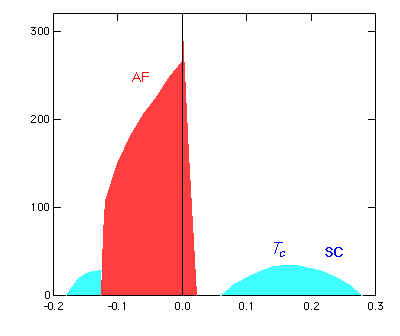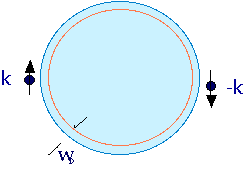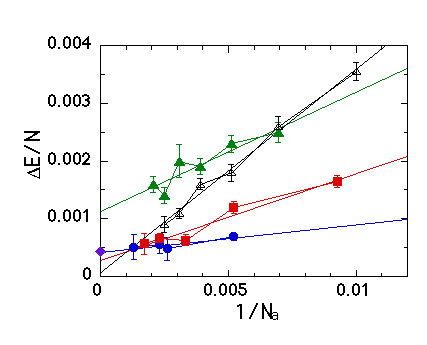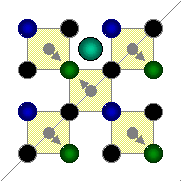トピックス
High-Tc Cuprates
Phase diagram

The high-Tc cuprates have the typical perovskite structure with the two-dimensional (2D) Cu-O planes. The mechanism of high temperature superconductivity (SC) is not still resolved although many theories have been proposed. The origin of SC certainly lies in the two-dimensional plane consisting of oxygen and copper atoms since the high-Tc oxides are quasi 2D materials with large anisotropy. The superconducting gap has d-wave symmetry, and thus a superconductivity originated from the on-site Coulomb repulsion is a candidate for high-Tc SC. We investigate the three-band model with copper and oxygen orbitals or the sinplified single-band Hubbard model.

Pairing state
As in the BCS scenario, two electron with opposite spins near the Fermi surface form the pairing state.

The size dependence of the SC condensation energy for the Hubbard model. The upper two lines are for the single-band Hubbard model, and the lower two lines are for the three-band Hubbard (d-p model). The diamond indicates the value for optimally doped YBCO. The blue solid line shows the results for the coexistent state of vertical stripes and SC. In this state the charge density has an oscillating component accompanying the spatial oscillation of the SC gap. In the underdoped region the SC competes and collaborates with antiferromagnetism at the same time. Because of the collaboration with AF, the SC can exists even in the low-doping region.

The figure indicates the LTT crystal structure at low temperatures. In this phase the vertical striped-state with inhomogeneous spin and charge distributions is stabilized and coexists with SC.
